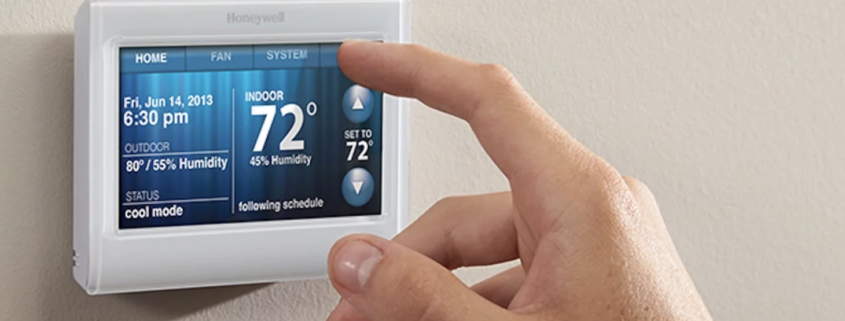If your energy bill leaves you with sticker shock every month, finding ways to save energy at home is crucial. One common question we often hear from customers is, “Should I set back the temperature when I leave my house?” Let’s explore the answers and strategies to optimize energy efficiency:
The Impact of Air Conditioning on Energy Consumption
Air conditioning stands out as one of the most energy-consuming appliances, constituting 17% of energy usage in homes, especially in mixed-dry climates like Los Angeles (U.S. Energy Information Administration).
Understanding Setback
Setback: The act of adjusting your thermostat from the normal temperature to another level to save on HVAC operation costs.
While the setback temperature may not feel comfortable when you’re present, the idea is to apply it when you’re away.
Is it Worth Changing Your Thermostat When Leaving?
Before deciding on thermostat adjustments, consider the following factors:
- Duration of Absence: Assess how long you’ll be away, whether for a few hours or several days.
- Temperature Setback: Determine how much to set back the temperature. A 1-2 degree setback differs from a 5 or more degree setback.
- Humidity Concerns: Evaluate if humidity is an issue in your home, especially for customers closer to the coast in locations like LA.
Leaving the House for a Couple of Hours
While leaving the AC running may seem convenient, adjusting the thermostat is crucial for energy savings. According to the Department of Energy, setting back the temperature for 8 hours can yield up to a 10% annual saving in heating and cooling costs.
The recommended temperature setback range is 7°-10°F, with an ideal summertime temperature for setback at 78°F.
Even a modest setback of 1-2 degrees brings some benefits, though greater setbacks are more effective. We advise customers to set back the temperature even for shorter absences, as every bit helps.
For those who struggle to remember, investing in a programmable or smart thermostat is a smart choice. With automation, you can schedule temperature setbacks and even initiate cooling before your return.
Extended Absence: Beneficial Temperature Strategies
If you’re away from home for several days, setting back the temperature is highly beneficial. Consider the following:
- Turning Off AC Completely: While it may be tempting to turn off your AC during extended absences, there are considerations to keep in mind.
- Humidity Control: Air conditioners help reduce humidity. Even if your home is empty, it’s crucial to keep the AC running to maintain humidity levels.
Temperature Setback for Travel
When leaving for travel, make sure to set back your temperature setpoint by at least 10 degrees. However, avoid turning it off entirely to preserve humidity control.
Additional Benefits of Temperature Setback
Setting back the temperature not only saves energy but also offers additional advantages:
- Extended AC Lifespan: Turning up the temperature adds years to your AC system’s life by reducing strain. Running the AC at full capacity, especially when not at home, increases the risk of breakdowns.
Maximize the benefits by incorporating temperature setbacks into your energy-saving routine.
For more information on energy efficiency, home improvement, and HVAC, stay tuned to our blog each month. Don’t miss updates – follow us on Instagram, Twitter, and LinkedIn.



